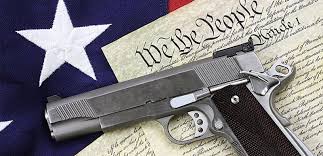
(from the rightscoop.com)
. . . because we don’t bring them cases they want to hear. I’m not a Supreme Court watcher, but anybody can play one.
The Supreme Court is unique in that it can’t take the initiative. A party must bring a case to the Court and request certiorari, i.e., that the court agree to hear the appeal. To be heard, the appellant must present an appealing case, one that the justices want to adjudicate.
At least four justices must agree to hear a case. Four of them are conservative, four are liberal, and one (Kennedy) is a “swing” voter. We can imagine a dynamic as follows. The two “teams” huddle separately and decide whether their team wants to hear the case. It’s possible, though unlikely, that both teams will want to hear the case. When that happens, the vote to hear portends a unanimous decision. Typically, one team will want to take the case to achieve its desired result, while the other team will oppose so as to leave the lower court’s decision as is. Therefore, the decision to take the case “swings” on whether the team that wants the case thinks that the ninth justice (Kennedy) will side with or against their preferred decision. When the team fears that Kennedy will vote against them, one member of the team that wants the case will vote against taking it. This team will bide its time until a more desirable case comes along.
The actual dynamic in any vote to take (or reject) an appeal is probably more complicated than this. The lesson is that gun rights advocates must strive to present cases that appeal to as many justices as possible. At minimum, the case ought to appeal to the conservative team and, most importantly, to Justice Kennedy. Preferably, the case ought to appeal to some of the liberal justices so as to not put all the eggs in Kennedy’s basket.
Caetano v. Massachusetts was an ideal Second Amendment case, albeit having nothing directly to do with firearms. It was a stun gun case. Briefly, a Ms. Jaime Caetano was convicted for violating the Commonwealth ban on possessing stun guns. The Massachusetts Supreme Court upheld the ban on the grounds that:
- stun guns “were not in common use at the time of the Second Amendment’s enactment.”
- they are “dangerous per se at common law and unusual,” and,
- there is “nothing in the record to suggest that [stun guns] are readily adaptable to use in the military.”
On each point, the court seemed to defy the dicta of the D.C. v. Heller decision. Would the Supremes see it that way? Apparently, they experienced little controversy answering that question. The Supreme Court took the case, refused to hear oral pleadings, vacated the Commonwealth court’s decision, and remanded the case “for further proceedings not inconsistent with this opinion.” All this in a unanimous, two page decision. SCOTUS did not declare a specific constitutional right to carry stun guns. They simply instructed the lower court to reconsider its decision based on SCOTUS precedents and their obvious disagreement with the Massachusetts finding.
Following the U.S. Supreme Court decision, the Massachusetts Supreme Court acquitted Ms. Caetano. Subsequently, states and municipalities began to consider repeals of their laws against stun guns. Observe that this was not a ruling that a law-abiding woman may exercise her Second Amendment rights by carrying a stun-gun everywhere. The Court’s opinion does not mention the fact that Ms. Caetano “carried” her stun-gun. It did not say she has a right to “. . . keep and carry arms wherever [she] went.” So what is the take away from the Supreme Court’s treatment of Caetano?
The appellant was an ideal “poster child”—a homeless single mother suffering from domestic abuse. She had multiple restraining orders against her abuser. The abuser was a foot taller and 100 pounds heavier than the appellant. This case presented an extremely sympathetic protagonist.
The Massachusetts law was an absolute ban which, as in Heller, avoided any need to determine whether “strict” or “intermediate” “scrutiny” was the required standard for Second Amendment cases. Absolute bans of common weapons fail any test for Second Amendment compatibility.
The background story had a happy ending in which the villain gave up and the heroine prevailed without bloodshed. Therefore, the State was not advocating for any injured party—it was litigating based on Commonwealth law, unsympathetic to the consequences to the innocent.
The actual danger to others (such as to the abuser) was negligible. Stun guns are not lethal weapons. In a concurring opinion, Justices Alito and Thomas scoffed that the Commonwealth’s court “. . . suggested that Caetano could have simply gotten a firearm to defend herself.” (Not a quick and easy task in Massachusetts.)
The Commonwealth court’s reasoning of diverged from Heller several points. But I suspect that the optics of the case also influenced SCOTUS.
Their Caetano decision suggests a strategy for pursuing Second Amendment cases that might appeal to the Supreme Court. The contested law should be offensive to as many points of reasoning as can be found in precedential cases, because the Supremes do not like lower courts defying their previous rulings. They don’t like absolute bans against exercising fundamental rights, either. Cases involving less lethal weapons are preferable to those that involve guns. Gun rights advocates should be pursuing the right to keep and bear “arms” of all types suitable for any legitimate purpose (including self-defense, hunting, recreation and militia activities). Upholding the right to one arm becomes precedent that will support other arms later. Most important, cases should be in sync with significant public sentiment.
All in all, the Supremes want to render decisions that:
- are congruent with their personal sympathies
- support the legislative branches (federal and state)
- support the executive branches (federal and state)
- are consistent with precedent
- move constitutional interpretation in a desirable direction
- will be applauded by the People generally, and,
- provide the smallest possible relief sufficient to dispose of the case at hand
All these objectives can rarely be satisfied at once. In most Second Amendment jurisprudence, plaintiffs are challenging some legislation. To overcome deference to the “representative” branches the Justices need every incentive possible to urge them to support a constitutional right “of the People”. Previous cases ought to have established some progress toward the right argued for, which should be interpretable as constitutionally fundamental. The arguments for the desired outcome need to fit that framework. Finally, the justices need to be able to see the preferred decision as aligning with the Peoples’ desire for justice. If all these considerations tip strongly in favor of the desired outcome then the Justices may be inclined to discount both their personal sympathies and deference to the political branches.
The liberals on the Supreme Court knew that the Caetano decision would bolster gun-rights, which must be contrary to their personal sympathies. Personally, they would have preferred to retard the expansion of gun rights. As strong believers in the progressive power of government, they would also have preferred to defer to the wisdom of the Massachusetts legislature.
I suspect that the liberal Justices likely voted against taking Caetano, but were cornered upon seeing that Kennedy would side with Ms. Caetano. They could not allow themselves to be seen on the side of government against both clear SCOTUS precedent and the general sentiment of the People.
Constitutional jurisprudence is not usually an all or nothing contest. To advance Second Amendment jurisprudence, gun rights advocates must bring cases that the Supreme Court will take. These cases must be ones that the advocates can win considering the obstacles and opportunities highlighted above. This thinking counsels for incrementalism on the finest and clearest possible points.
 —’MarkPA’ is trained in economics, a life-long gun owner, NRA Instructor and Massad Ayoob graduate. He is inspired by our inalienable rights to “life, liberty and the pursuit of happiness” and holds that having the means to defend oneself and one’s community is vital to securing them.
—’MarkPA’ is trained in economics, a life-long gun owner, NRA Instructor and Massad Ayoob graduate. He is inspired by our inalienable rights to “life, liberty and the pursuit of happiness” and holds that having the means to defend oneself and one’s community is vital to securing them.
